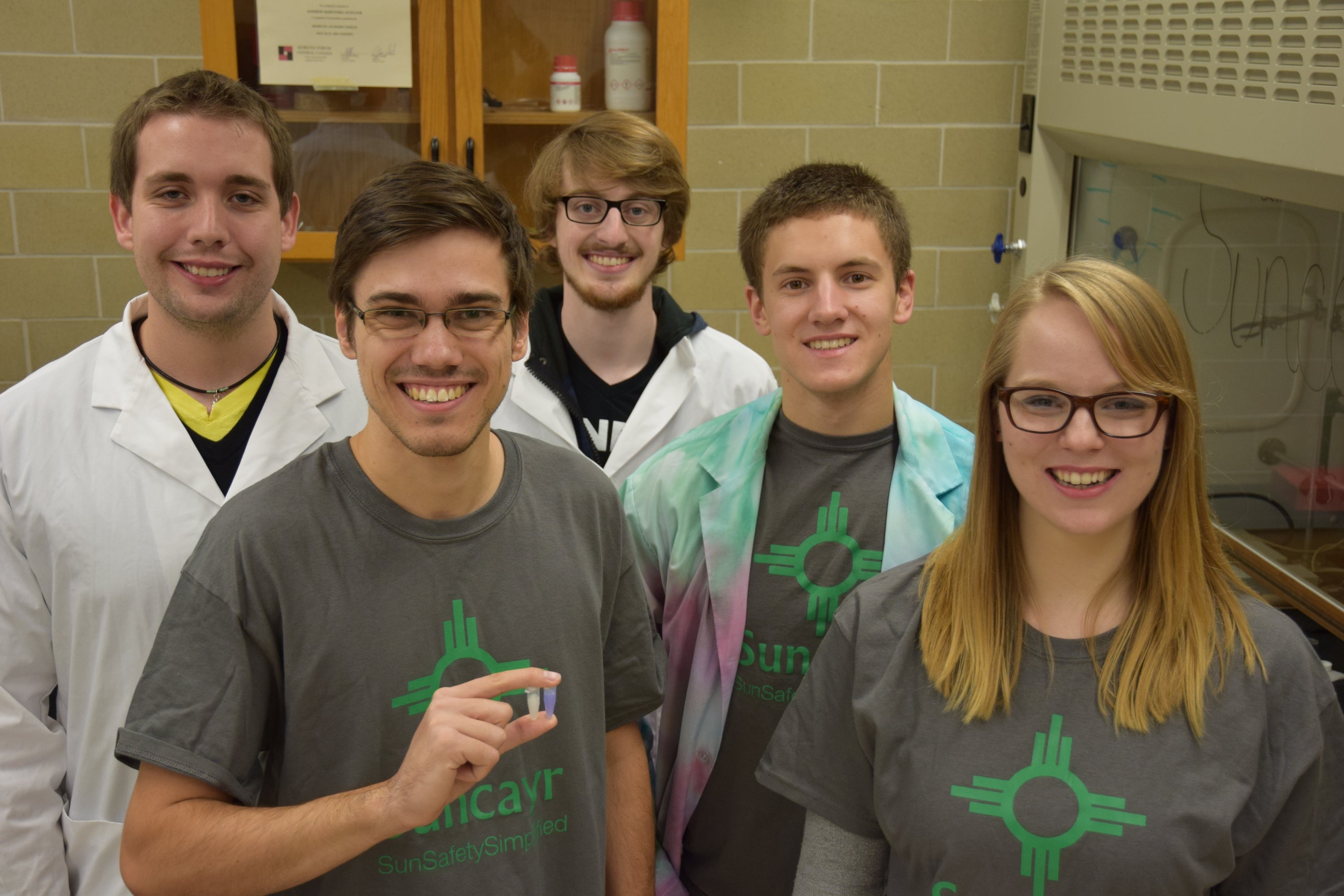A University of Waterloo startup developing a marker that lets you know when you need to reapply sunscreen is the runner-up in a prestigious international design competition.
Suncayr, a company formed by nanotechnology engineering students in Waterloo’s Velocity program was announced as an international runner up in James Dyson Awards on Thursday. The James Dyson Award, founded by the British industrial designer and inventor of the Dyson bagless vacuum, runs in 18 countries.
Using the UV-responsive marker, aSuncayr user simply draws a design on their skin before applying sunscreen. When the sunscreen is protecting skin, the marker is one colour. When the sunscreen is no longer blocking harmful UV rays, the marker changes to a different colour notifying the user it’s time to reapply.
The Dyson contest is open to university level students (or recent graduates) studying product design, industrial design and engineering, who "design something that solves a problem.” As a runner-up of the James Dysonaward, the group will receive $9,000 (£5,000) to further develop, test and ultimately commercialize their project.
“Our team was inspired to develop a product that would better protect people against the sun’s UV rays, which are harmful to our skin and causes sunburns, skin aging and can lead to skin cancer,’ said Rachel Pautler, CEO of Suncayr. “We were fed up with being sunburned on days we thought we were being vigilant about re-applying sunscreen, and as engineers, we knew we could create a better solution. Using Suncayr with sunscreen can offer more effective protection against harmful UV rays and will allow people to be safer in the sun.”
One in every three cancers diagnosed worldwide is skin cancer and according to the Canadian Skin Cancer Foundation, more than 80,000 Canadians are diagnosed each year. Suncayr attempts to help alleviate this problem with an inventive colour-changing marker that tells you when your sunscreen is no longer protecting you.
“The consequences of not having adequate sun protection are significant.Suncayr uses visual cues, so it’s obvious when it’s time to reapply sunscreen,” said James Dyson. “As with all the best problem-solving designs, it’s very simple to use – but very effective.”
The team behind Suncayr is a group of fourth-year University of Waterloo nanotechnology engineering students from Waterloo’s innovative Velocity Science incubator. Waterloo's Nanotechnology Engineering degree program is unique, and first-of-its-kind in North America. Programs are offered in collaboration with the Department of Chemical Engineering and the Department of Electrical and Computer Engineering in the Faculty of Engineering, and the Chemistry Department in the Faculty of Science.

Velocity Science is a partnership between Velocity and the Faculty of Science. Since its establishment in April, Velocity Science has helped initiate ten student-led companies.
“We know we wouldn't have been able to make it this far without the supportive community, especially the lab space and mentorship provided by Velocity Science," says Jouppi.
The 2014 James Dyson Award international winner is MOM, a low cost, inflatable incubator for use in the developing world. The design engineer behind MOM is James Roberts, a recent graduate from LoughboroughUniversity, UK.
The James Dyson Foundation was set up in 2002 to support design engineering education, medical research and local charities in the Wiltshire, UK area.
About the University of Waterloo
In just half a century, the University of Waterloo, located at the heart of Canada's technology hub, has become one of Canada's leading comprehensive universities with 35,000 full- and part-time students in undergraduate and graduate programs. Waterloo, as home to the world's largest post-secondary co-operative education program, embraces its connections to the world and encourages enterprising partnerships in learning, research and discovery. In the next decade, the university is committed to building a better future for Canada and the world by championing innovation and collaboration to create solutions relevant to the needs of today and tomorrow. For more information about Waterloo, please visit www.uwaterloo.ca.